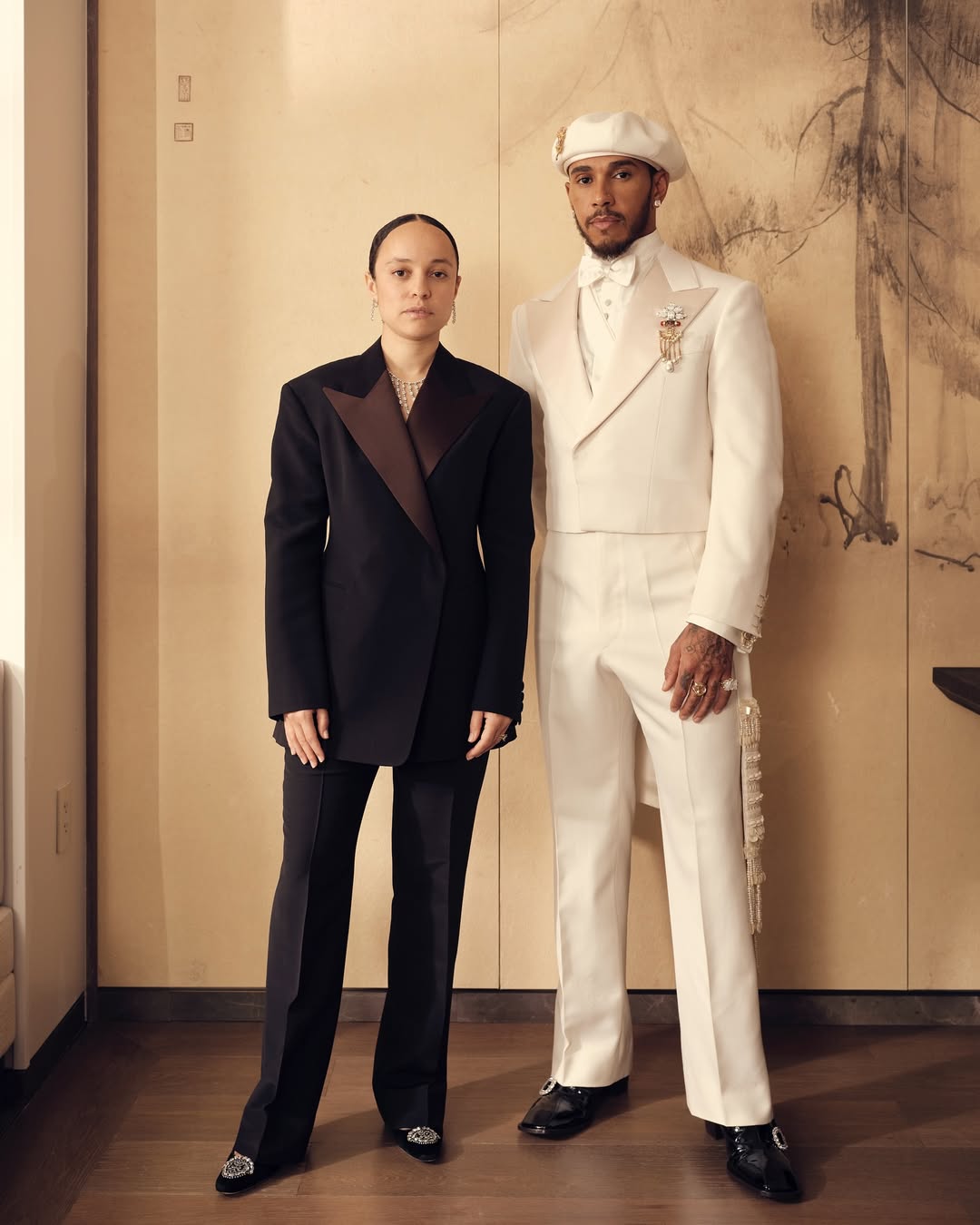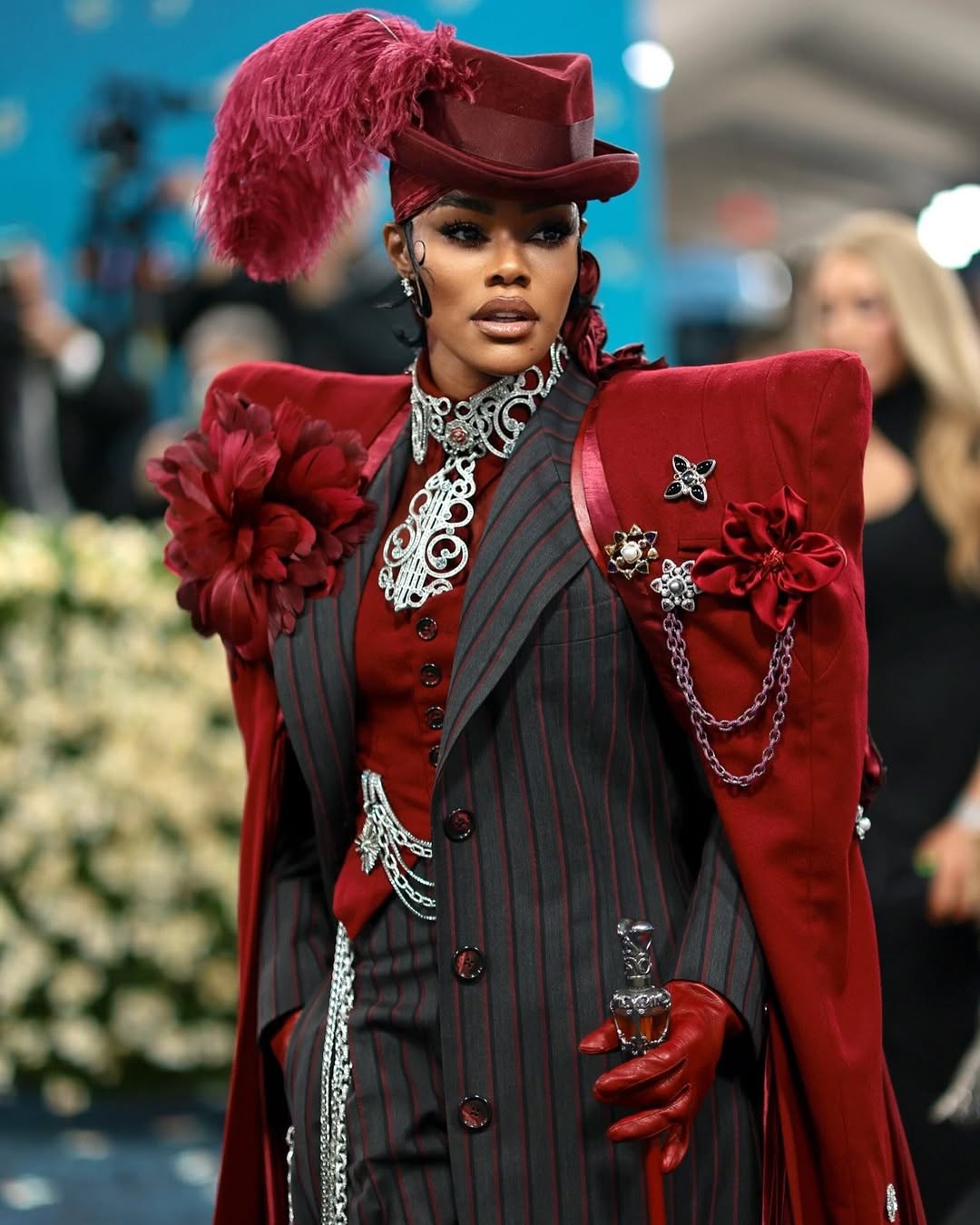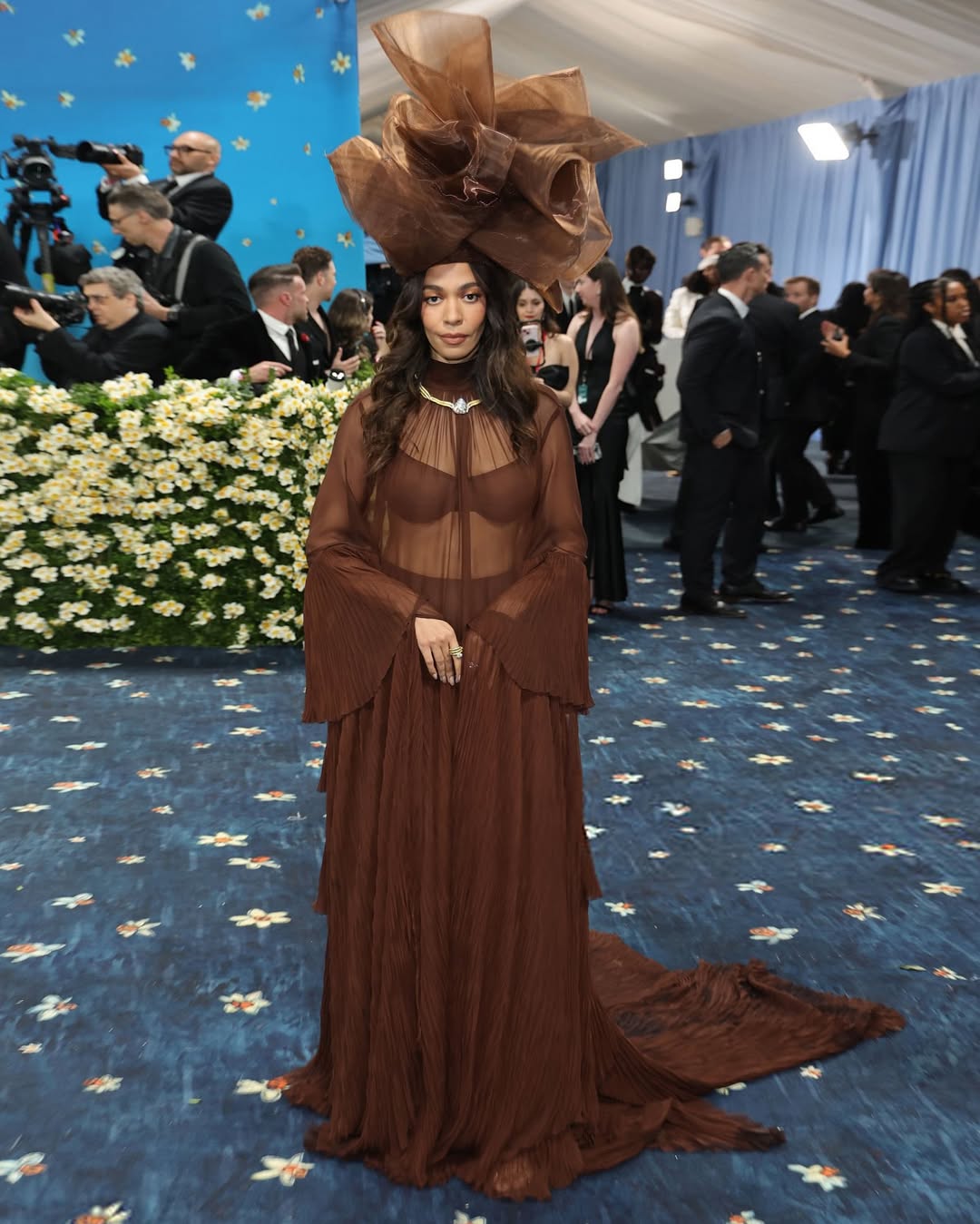We’ve spent the last four weeks digging into the roots of regalia, resistance, and everything stitched in between. Threads of Influence wasn’t about nostalgia. It was about showing how Black style has always been a strategy. And how tailoring, in particular, has carried history on its back. So when the 2025 Met Gala chose Superfine: Tailoring Black Style, we didn’t need to catch up. We’d already mapped the archive.
What showed up on the steps wasn’t a tribute. It was a return.
The Story Is in the Stitching

Lewis Hamilton didn’t just show up. He arrived in story.
Wearing a custom ivory ensemble by Grace Wales Bonner, Hamilton’s look featured a cropped tailcoat, high-waisted trousers with satin side-stripes, and a ceremonial sash embroidered with cowrie shells and mother-of-pearl buttons – symbols of protection and status in West African cultures. His accessories; a baobab-inspired brooch, garnet ear cuffs, and Whirligig African Daisy cufflinks added layers of meaning, referencing Black spiritual traditions and nodding to style icons like Cab Calloway, James Baldwin, and André Leon Talley.
These weren’t embellishments. They were citations. A diasporic grammar rendered in cut, cloth, and memory.
It wasn’t performative. It was personal. A declaration: I know where I come from.
Elegance as Rebellion, Swagger as Language

In Part II, we explored how Black dandyism during colonial rule wasn’t just about aesthetics — it was resistance. Tailoring became a way to claim space and visibility.
That same strategy came through in Teyana Taylor’s look: a crimson pinstripe zoot suit, a sweeping velvet cape, and a red cane—designed in collaboration with Ruth E. Carter. It was part Harlem Renaissance, part Harlem Nights, and all power. A feminine reworking of masculine codes with cinematic swagger.
She didn’t just wear a suit. She walked in a lineage of Black women who’ve always known fashion could speak—and disrupt.
From Brazzaville to Brooklyn: Sapeurs in the Shadows
Part III took us into the world of the Sapeurs—Congo’s sharply dressed rebels who turned elegance into defiance. That spirit showed up at the Met in bursts: jewel-toned suiting, sculptural hats, maximalist accessories. Whether it was Pharrell leaning into legacy, or Jaden Smith in Boateng and kente, the most expressive looks carried the DNA of La Sape—precise, peacocking, unbothered by convention.
This wasn’t mimicry. It was a remix.
The Continent Speaks in Couture

By Part IV, we had shifted our gaze to a new vanguard — designers from the continent transforming heritage into innovation. At the Met, they finally had the stage.
Thebe Magugu’s couture debut on Aurora James stunned: twelve meters of thorn-brown pleated chiffon, a gele-inspired headpiece, and visual cues drawn from mid-century African photography. Black elegance, recontextualized.

Adebayo Oke-Lawal of Orange Culture dressed Brian Tyree Henry in a fiery red suit and cape—fluid, Naija-rooted, future-facing.

Ozwald Boateng outfitted a constellation of talent—Tems, Burna Boy, Ayra Starr, Colin Kaepernick—in looks that fused kente linings, African print accents, and Victorian form. The tailoring wasn’t an homage. It was a statement: this is what global Black fashion looks like.
Tailored for You. Woven from Us.
Tailored for You—this year’s Met Gala dress code could have meant anything. For Black creatives, it meant everything.
Because tailoring, for us, has never been about fit alone. As we explored in Parts V and VI, it’s been a tool of respectability, rebellion, and return. It’s how our elders demanded dignity. It’s how Malcolm X made a suit feel like a sermon. It’s how we still show up — sharp, layered, intentional.
The show’s intellectual foundation — Monica L. Miller’s Slaves to Fashion made it plain: Black dandyism has always been about claiming space, reframing identity, and using style as survival. A contest of power and aesthetics. The Met Gala showed what it looks like when we win that contest on our own terms.
We Didn’t Just Observe. We Documented.
From the start, Threads of Influence wasn’t just about fashion. It was about tracing the long, unbroken line of Black expression — from cloth to code, from tradition to disruption. We mapped it across six chapters: from precolonial regalia to postcolonial swagger, from Sunday suits to diasporic couture.
And on May 5, we saw it all reflected back.
What we saw on the Met steps wasn’t spectacle — it was story. It proved what we’ve been saying from the start: Black fashion doesn’t need a theme. It’s been the blueprint. The reference point. The engine.